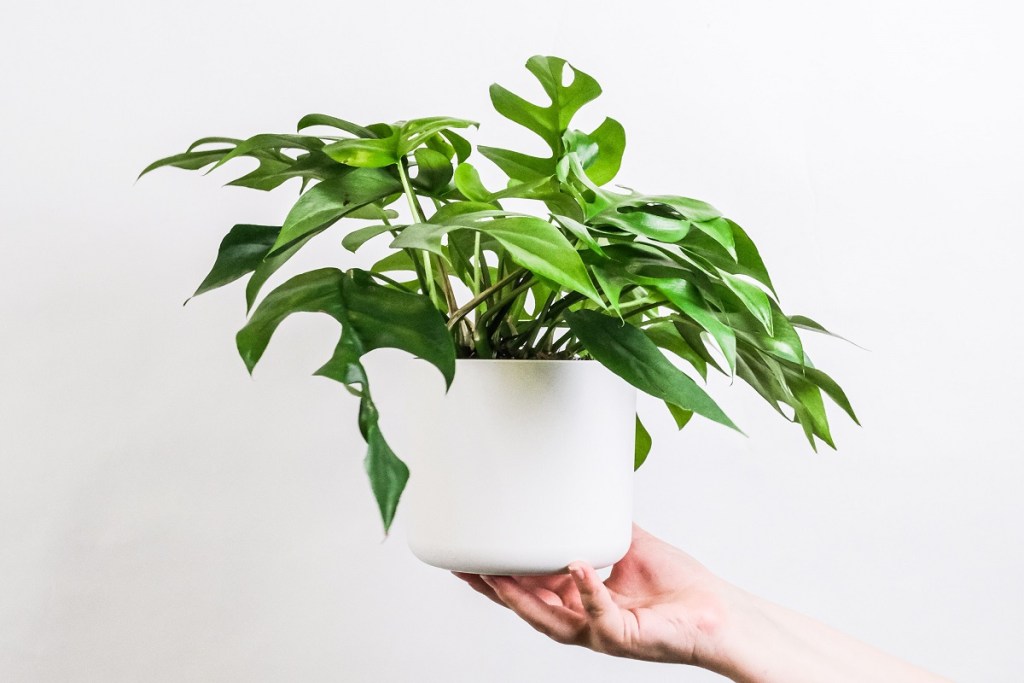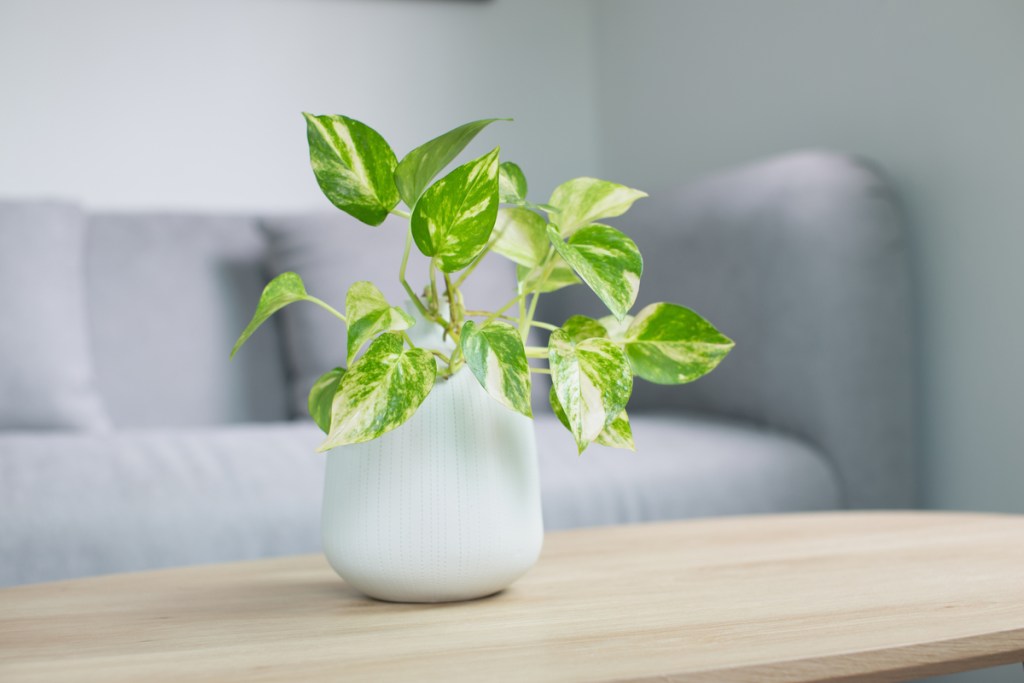Every year we watch plants outside go dormant. The trees change color, drop their leaves, and we’re left with what appear to be dying forests blanketed in snow. But come spring, without fail, green buds start to pop up all over the place—almost as if the plants have come back to life. Winter dormancy is part of the natural order, and houseplants are no exception.
Houseplants may not go fully dormant, but they’ll most often show signs of winter dormancy as the temperatures start to cool and the days have less light. You’ll be able to tell this is happening when growth starts to slow and your plants begin dropping some leaves. But don’t worry! They’re still alive, storing their energy and needing a bit of love and care.

What’s the purpose of winter dormancy?
From April to August, plants are blooming and growing leaves like there’s no tomorrow. This is what’s known as the growing season, which, believe it or not, isn’t just a season for outdoor gardens. Like outdoor garden beds, indoor plants thrive during these months because of the warmer temperatures and longer daylight hours. There’s more time to photosynthesize, so they can produce more energy to put toward growing bigger leaves and stronger stems.
All these factors, when we look at them from the opposite end of the spectrum, are why plants experience winter dormancy. The shorter daylight hours and colder temperatures mean there’s less time during the day to photosynthesize, so plants have to use what little stored energy they have to focus on surviving the cold instead of putting out new growth. This is why you’ll often see fewer leaves being produced and weaker ones dropping off. The plant is trying to keep itself as healthy as possible, and it relies on you for a good chunk of that care.
Usually, you don’t need to do anything to get plants to go dormant. It’s part of a natural process that happens when the world cools and there isn’t as much sun. All you need to do is let things happen naturally while maintaining a new winter care routine.
How to care for dormant houseplants
Caring for dormant houseplants isn’t all that different from caring for them during the growing season. The general guideline is to simply do less of it (which, as plant lovers, we know to be difficult because let’s face it, tending to our plants brings an immense level of joy into our lives); however, there are some things you’ll want to add in or stop doing to give them the happiest winter possible.
- Water less often. Because plants aren’t growing as fast, they aren’t using up as much water. It’s recommended that during the winter months, you test the soil with your finger to see how moist it is. Water only when at least the top two inches are dry.
- Maintain humidity. Most plants love some level of humidity, and they hate drying out during the winter. You can help maintain a good humidity level by either getting a humidifier or grouping your plants together to create a microclimate.
- Move them away from drafts. Winter care may mean relocating your plants if your windows are drafty. They don’t like the cold, and any air coming in through cracks in the windows will potentially shock your houseplants. Ideally, they should be in an area between 65 and 75 degrees Fahrenheit, even in the colder months.
- Don’t fertilize. Plants aren’t using as many nutrients in the winter and likely won’t use up the fertilizer you give them. The excess will sit in the soil and throw off the natural balance. It’s best to only fertilize during the active growing season, as fertilizing outside of it can hurt more than help.
- Dust off the leaves. Because growth has slowed, houseplants in winter accumulate lots of dust on the leaves. The dust and dirt is, unfortunately, a perfect breeding ground for pests and diseases. Dust them off gently and regularly with a damp cloth to keep them clean and healthy. You should also be trimming off any dead or dying leaves.
It can take a bit for houseplants to fully come out of winter dormancy once spring arrives. To help them along, make sure they’re in an ideal growing environment and give them a small bit of fertilizer to get them started.

Common houseplants that go dormant
If you’ve noticed slow growth during the colder months with a lot of your houseplants, chances are they’re experiencing some level of winter dormancy. Plants that go through this phase should be cared for, not discarded, as the full growth you know and love will return once the weather starts to warm up.
Having one or more of these houseplants in your collection will let you see what winter dormancy looks like versus periods of stress and help to give you an idea of when a plant is too far gone as opposed to when it’s going through a natural cycle:
- Marble queen pothos
- Chinese evergreen
- Philodendron
- Aloe vera
- Snake plant
- Fiddle leaf fig
- Monstera deliciosa
And this is just the beginning. Whether it’s slow growth or leaf drop, most houseplants will experience some level of winter dormancy because that’s just the natural order of things. Be mindful of your plant care routine in the winter, and you’ll have no trouble keeping your plant babies alive through to the next growing season.
Editors' Recommendations
- Are these common houseplants safe for your cat? Read this guide to find out the scoop
- Add holiday cheer to your home with these colorful houseplants
- Wondering how to water succulents? Here are the best succulent watering tips
- Add style to your space with these trendy alocasia indoor plants
- How much water do your houseplants need? Here’s a guide to houseplant water needs



